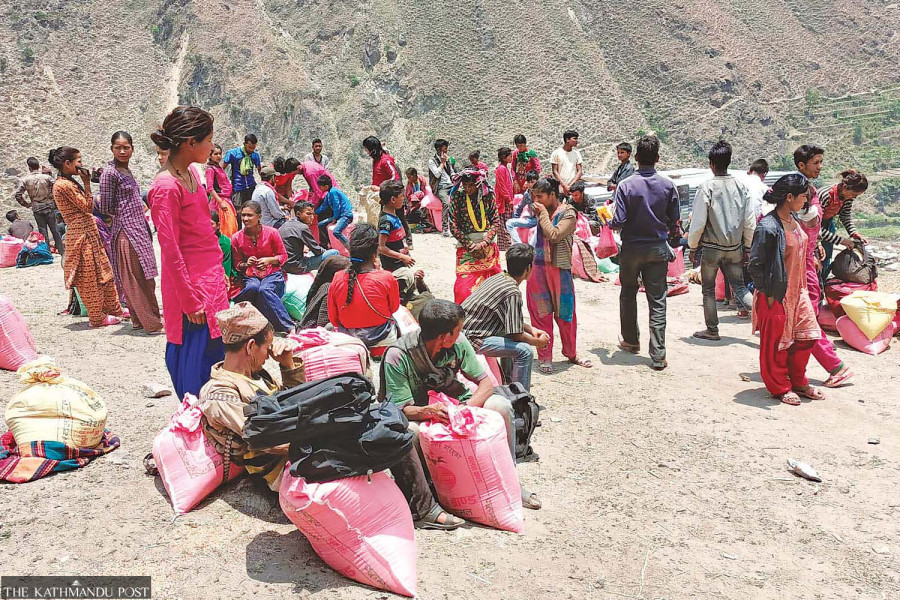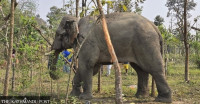Sudurpaschim Province
Experts study Bajura malnutrition
Sudurpaschim Provincial Health Directorate aided by Unicef, has begun a 10-day scientific survey in the district.
Arjun Shah
The Sudurpaschim Provincial Health Directorate has commenced a scientific survey to take stock of malnutrition in Bajura, a remote hill district affected by poverty and various social problems.
The directorate started the Standardised Monitoring Assessment for Relief and Transition Method (SMART) survey on Saturday to find out the actual situation of malnutrition in Bajura. According to DN Giri, data management officer at the directorate, the provincial health authority has launched the SMART survey based on the standard of the World Health Organisation.
The SMART survey will be conducted for 10 days by dividing all nine local units of Bajura into 30 different clusters. “The survey teams visit the settlements and study the situation of malnutrition of children aged between six months and five years,” Giri said. “The SMART survey is a modern survey method conducted in the field over a short period of time.”
The directorate has mobilised 22 enumerators and five supervisors for the survey carried out with a grant of Rs1.6 million from UNICEF, the UN agency working to end malnutrition in more than 190 countries including Nepal.
Bajura is possibly one of the districts hit the hardest by malnutrition in the country. According to data available at the Bajura District Health Office, a total of 1,086 children suffered from severe acute malnutrition and were admitted to the nutrition rehabilitation homes in the district in the last fiscal year 2021-22. Among the nine local units, Swamikartik Khapar Rural Municipality alone has 194 cases of severe acute malnutrition.
According to reports, children in Muktikot, a Dalit settlement in Swamikartik Khapar Ward No 1, are dying due to the lack of food. A study carried out by the rural municipality in June shows that as many as six children died of malnutrition within the past year.
The cause of the high infant mortality rate in Muktikot village is the shortage of nutrients, vitamins, minerals and other vital sources of nourishment in mothers and babies. Almost all the mothers who lost their babies point out insufficient lactation as the cause of their deaths. While neonatal, postneonatal and early deaths are plaguing almost every household in Muktikot, miscarriage is another factor that endangers the lives of mothers.
According to Umesh Shahi, chief of the Basic Health Unit in Muktikot, there are a total of 293 children below five in Muktikot. “There were 45 children suffering from moderate acute malnutrition in Muktikot by mid-February,” said Shahi. “The number increased to 46 by mid-June.”
Food insecurity is a significant problem in Muktikot, an arid steep hill topography of Bajura. In the area often hit by long droughts, the villagers do not try to grow crops. The impoverished Dalit people often have a tough time managing food for themselves and their children.
“No one in the family earns enough money to provide nutritional food for all members of the family,” Khusi BK, a local of Muktikot. “The food grains we produce last only a few days.”
There are 308 households in Muktikot. A study conducted by Swamikartik Khapar Rural Municipality in February-March shows that there is not even a single family that produces enough food grains that last the whole year. According to the report, 186 families produce crops that are enough for only a month, 27 families for three months and only seven families produce crops that last six months.
The Sudurpaschim Province government has been criticised for not taking any concrete initiatives to control the alarming situation of malnutrition in Muktikot and the entire Bajura district. It is expected that the SMART survey will show the actual situation of malnutrition and will be helpful in making necessary plans and policies.
According to the 2011 census, 64.1 percent of people in Bajura are below the poverty line, with Muktikot being one of the poorest villages.




 14.12°C Kathmandu
14.12°C Kathmandu












